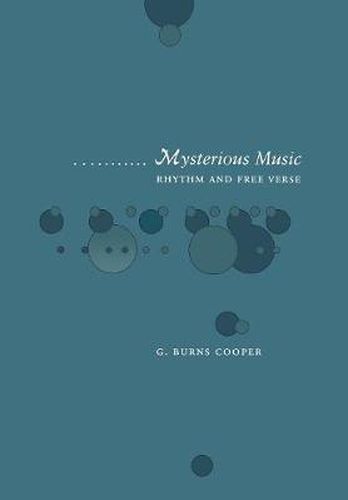Readings Newsletter
Become a Readings Member to make your shopping experience even easier.
Sign in or sign up for free!
You’re not far away from qualifying for FREE standard shipping within Australia
You’ve qualified for FREE standard shipping within Australia
The cart is loading…






Though many recent poets insist on their poetry s musical qualities, few offer linguistically satisfying explanations of that music. This book helps to fill that gap. It is a linguistically based study of rythmic structures, and of the nature of rhythm, in the free verse of T.S. Eliot, Robert Lowell, and James Wright. It was written for accessibility to readers who, although not necessarily specialists in linguistic poetics, have some knowledge of language and poetry. The book begins with an examination of rhythm in language as a whole, and of rhythm as a basic mental structure. This discussion touches on concepts from metrical phonology, acoustic phonetics, Russian Formalist and New Critical ideas of rhythm and meter, and music theory. It then analyzes what the author (borrowing a phrase from Gerard Manley Hopkins) calls rhythmic figures of sound, syntax, line structure, and intonation in the poetry of Eliot, Lowell, and Wright.
$9.00 standard shipping within Australia
FREE standard shipping within Australia for orders over $100.00
Express & International shipping calculated at checkout
Though many recent poets insist on their poetry s musical qualities, few offer linguistically satisfying explanations of that music. This book helps to fill that gap. It is a linguistically based study of rythmic structures, and of the nature of rhythm, in the free verse of T.S. Eliot, Robert Lowell, and James Wright. It was written for accessibility to readers who, although not necessarily specialists in linguistic poetics, have some knowledge of language and poetry. The book begins with an examination of rhythm in language as a whole, and of rhythm as a basic mental structure. This discussion touches on concepts from metrical phonology, acoustic phonetics, Russian Formalist and New Critical ideas of rhythm and meter, and music theory. It then analyzes what the author (borrowing a phrase from Gerard Manley Hopkins) calls rhythmic figures of sound, syntax, line structure, and intonation in the poetry of Eliot, Lowell, and Wright.